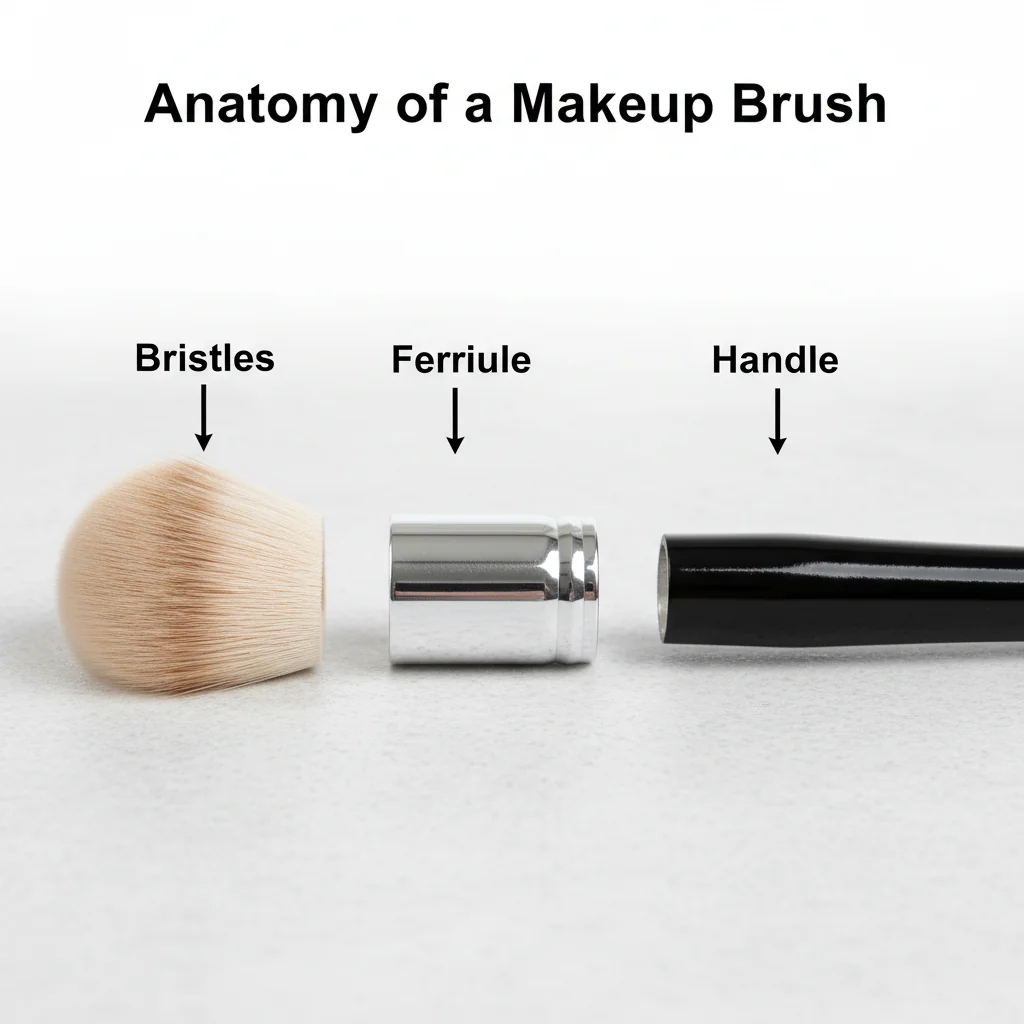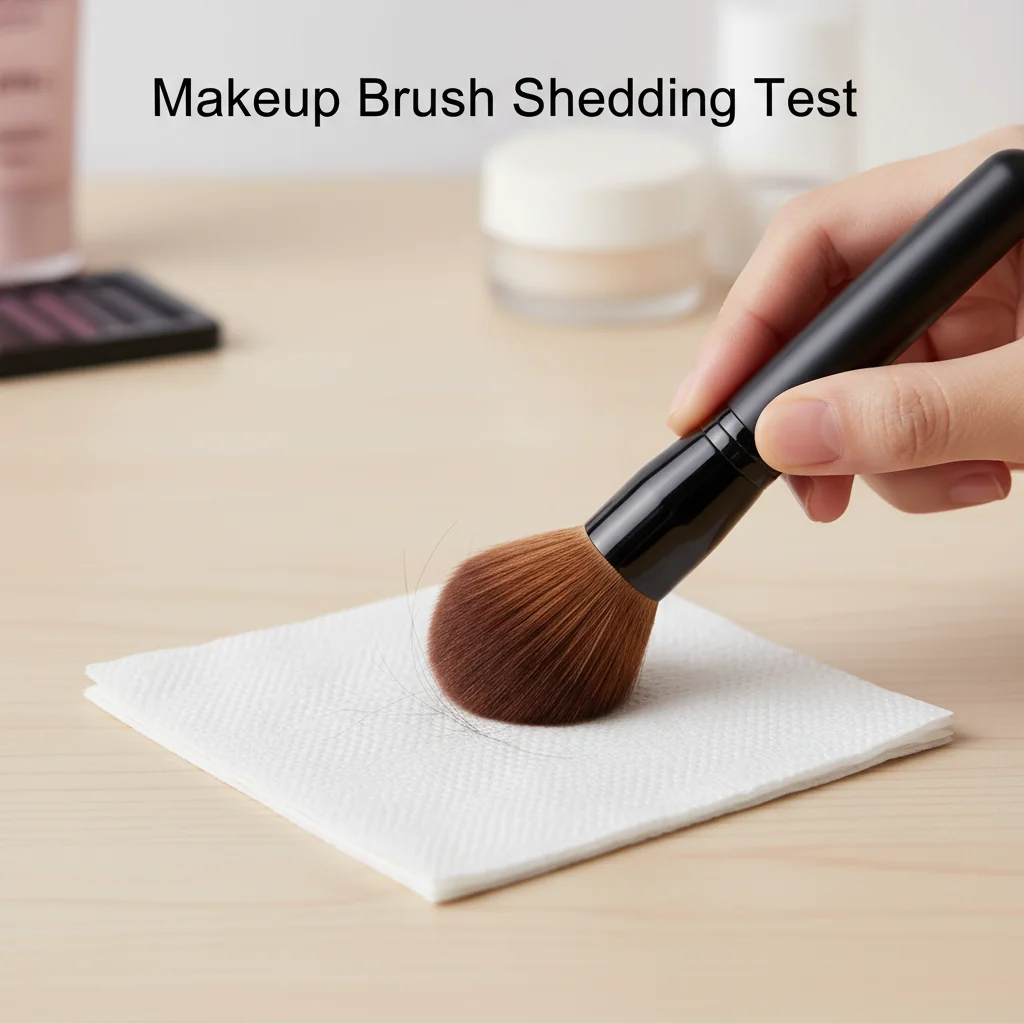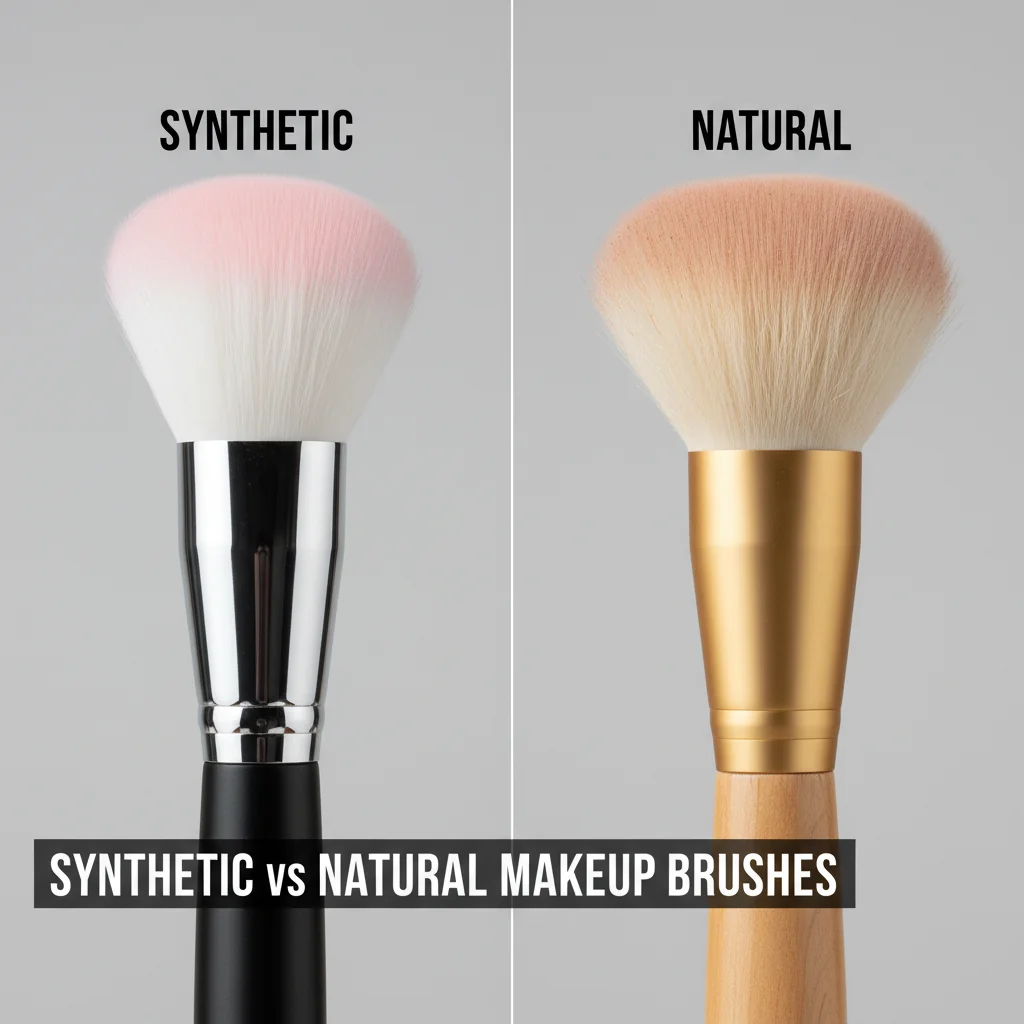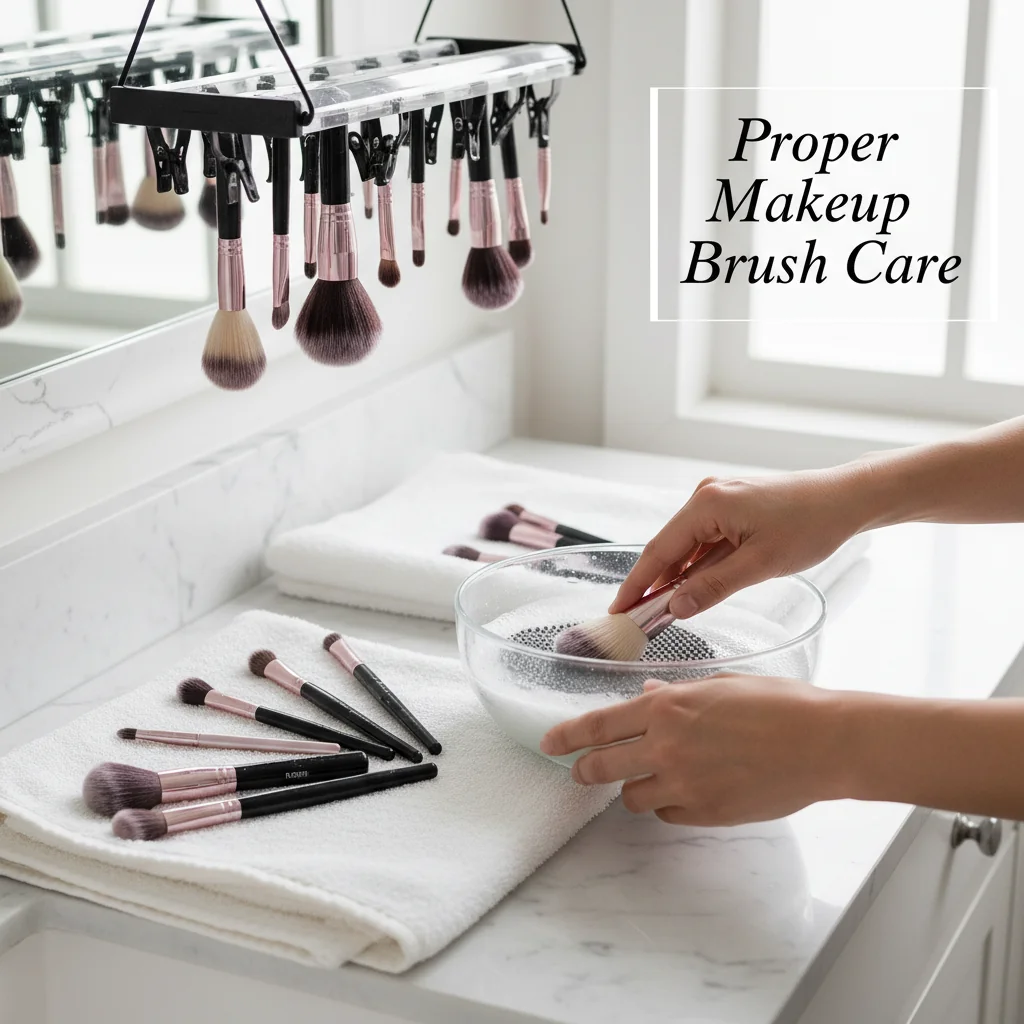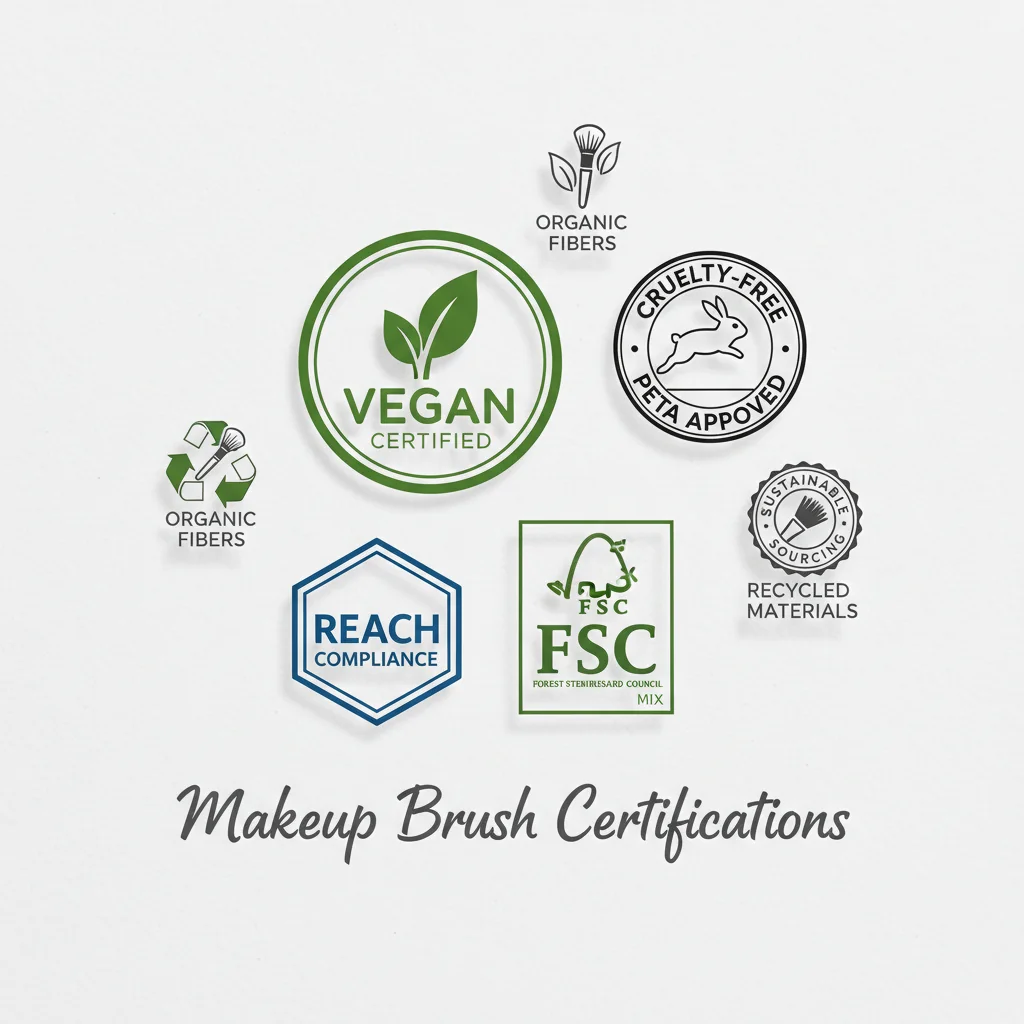Sourcing makeup brushes feels like a gamble. You worry about shedding, poor quality, and unhappy customers. A bad batch can ruin a product launch and damage your brand’s reputation.
A high-quality makeup brush has dense, tapered bristles1, minimal shedding, a seamless and firm ferrule with zero wiggle, and a balanced handle. Modern synthetic fibers now rival natural hair for all formulas, supporting vegan claims without sacrificing performance. For B2B, always require supplier QC documentation.
When I first started on the factory floor, I learned that a beautiful brush isn’t always a good brush. The real quality is in the details you can’t see at first glance. For brand founders like you, getting these details right is everything. It’s the difference between a one-time sale and a loyal customer. Let’s break down exactly what to look for, so you can source with confidence and build a brand known for excellence.
A high-quality makeup brush should never shed a single fiber.False
Even the best brushes may shed 1-2 fibers initially. The key is minimal, not zero, shedding. A test of 10 strokes on tissue should yield no more than one loose fiber.
Seamless brass ferrules offer better corrosion resistance and durability than crimped aluminum ones.True
Brass is a stronger, more corrosion-resistant metal. A seamless design prevents water from getting trapped, which protects the glue and prevents shedding over time, making it ideal for premium brushes.
How can you tell if a makeup brush is good quality?
Receiving a new brush sample is exciting, but how do you know if it’s truly good? A quick visual check isn’t enough to protect your brand from quality issues.
Check for dense, evenly cut bristles with tapered tips. Test for minimal shedding on a tissue. Ensure the ferrule is seamless and has zero wiggle. The handle should feel balanced, and the bristles must glide smoothly on your skin without any scratchiness.
From my years in manufacturing, I can tell you that the most reliable answers come from simple, hands-on tests. You don’t need a fancy lab to spot a poorly made brush. You just need to know what to look for and how to test it. I’ve used these five simple tests to check thousands of brushes, and they are the fastest way to validate quality before you place a large order.
The 3-Part Build: What Defines Quality?
A brush is only as strong as its weakest part. Here’s the breakdown:
- Bristles: Look for density and evenly cut, tapered tips. This ensures smooth product pickup and application.
- Ferrule: This is the metal part connecting the bristles to the handle. It should be seamless and crimped tightly. A loose ferrule is the number one cause of shedding.
- Handle: It should feel balanced in your hand. I prefer FSC-certified wood for sustainability, but high-grade plastic also works. Check for smooth lacquer and no signs of glue seeping out near the ferrule.
Quick QC: 5 Arrival Tests for B2B Buyers
Run these tests the moment your samples arrive:
- shedding test2: Stroke the brush firmly over a white tissue 10 times. More than one loose fiber is a red flag.
- pull test3: Gently tug on the bristle tips. No fibers should come out. In the lab, we aim for a pull strength of at least 2–3 Newtons.
- Ferrule Wiggle Test: Hold the handle and try to wiggle the ferrule. There should be zero movement. Any give means the glue or crimp is weak.
- water/glue test4: Briefly dip the bristle tips in water. There should be no discoloration, chemical odor, or sticky glue seeping out.
- Skin Glide Test: Sweep the brush on the back of your hand. It should feel soft and smooth, not scratchy.
The 'ferrule wiggle test' is the most important QC check for predicting a brush's lifespan.True
A wiggling ferrule indicates a failure in the glue bond or crimping, which is the primary reason brushes fall apart. It directly predicts future shedding and breakage.
You can only test brush quality in a professional laboratory.False
While labs provide precise data like pull-test newtons, any buyer can perform simple, effective physical tests like the shedding, wiggle, and skin glide tests to identify major quality issues.
Is synthetic or natural better for professional results?
The synthetic versus natural debate causes a lot of confusion. Choosing the wrong fiber can make your product perform poorly and even alienate customers who value vegan and cruelty-free products.
For liquids and creams, synthetic (Taklon/nylon) is better because it’s less absorbent and more hygienic. For powders, modern tapered synthetics now rival natural hair in performance, making them a strong, versatile, and ethical choice for professional-grade, vegan-friendly lines.
When I started in this industry, natural hair was considered the only option for high-end powder brushes. But technology has changed everything. I’ve worked directly with fiber engineers to develop synthetic bristles that mimic the pickup and laydown of the finest goat hair. For brand owners today, this is a huge opportunity. You can meet the growing demand for vegan products without compromising on the professional results your customers expect. It’s about matching the right material to the right formula.
Materials That Matter: Matching Fibers to Formulas
The performance of your brush depends entirely on choosing the right material for the job.
- Synthetic (Taklon/Nylon): These fibers are my top recommendation for most brands today. They are perfect for liquid foundations, concealers, and cream blushes because they don’t absorb product. They are also durable, easy to clean, and essential for making vegan and cruelty-free claims. New-generation synthetics with tapered tips now perform exceptionally well with powders, too.
- Natural (Goat/Sable/Squirrel): Historically, these were prized for their textured cuticle, which picks up powder products beautifully. However, they come with challenges: ethical sourcing concerns, potential for allergens, and higher maintenance. The market trend is clearly shifting away from natural hair.
Ferrules: Brass vs. Aluminum
The ferrule is more than just a connector; it’s the structural core of the brush.
- Brass: This is the premium choice. It’s heavier, stronger, and highly resistant to corrosion. A seamless brass ferrule is the best defense against shedding, especially after repeated washing. I recommend it for your hero products.
- Aluminum: This is a lighter, more cost-effective option. It’s perfectly suitable for price-point lines, but make sure it’s firmly crimped to prevent wiggling.
| Material | Best For | Key Benefit |
|---|---|---|
| Synthetic (Taklon) | Liquids, Creams, Powders | Hygienic, Durable, Vegan |
| Natural (Goat) | Powders | Excellent Pickup |
| Brass Ferrule | All Brush Types | Corrosion-Resistant, Prevents Shedding |
| Aluminum Ferrule | Price-Point Brushes | Cost-Effective |
Natural hair brushes are always better for applying powder makeup.False
While traditional, high-end tapered synthetic fibers have been engineered to mimic the texture and pickup of natural hair, making them equally effective for powders while also being vegan and more durable.
Synthetic brushes are better for liquid and cream products because they are less porous than natural hair.True
Synthetic fibers don't have a cuticle, so they absorb less product. This means more makeup is transferred to the skin instead of being wasted in the bristles, making them ideal for liquids and creams.
How long do quality makeup brushes last with proper care?
Are your customers complaining about brushes that fall apart after a few washes? That kind of premature failure isn’t normal, and it reflects poorly on your brand.
With proper care, like weekly cleaning and drying with bristles facing down, a high-quality makeup brush should last for several years, even in professional use. Premature failure is almost always linked to a poor ferrule bond or aggressive washing that lets water seep inside.
I’ve seen firsthand how a small shortcut in the factory—like using weak glue or not crimping a ferrule tightly enough—can lead to a brush falling apart in months. That’s why the QC tests we talked about are so important. A brush that passes the "ferrule wiggle" and "water soak" tests is built to last. Longevity isn’t an accident; it’s a direct result of good manufacturing. As a brand owner, you can also educate your customers on proper care. This not only helps them get the most out of their purchase but also reinforces your brand’s commitment to quality and value.
The Link Between Quality and Longevity
A brush’s lifespan is determined by its construction. Here are the common failure points to watch for:
- Glue Failure: If water repeatedly gets inside the ferrule during washing, it will break down the glue that holds the bristles. This is the main cause of shedding. A seamless ferrule helps prevent this.
- Handle Damage: Soaking the entire brush can cause wooden handles to swell, crack, or lose their finish.
- Corrosion: Low-quality aluminum ferrules can rust or corrode over time, which can also weaken the brush structure.
Care Instructions to Ensure a Long Life
To help your customers, provide these simple care tips:
- Wash Weekly: Use a gentle brush cleanser or soap.
- Rinse Bristles Down: Always keep water out of the ferrule.
- Reshape and Dry: Gently squeeze out excess water, reshape the bristles, and lay the brush flat or hang it upside down to dry completely.
You should soak your brushes in hot water to disinfect them.False
Soaking brushes, especially in hot water, will break down the glue inside the ferrule, causing the bristles to shed and the brush to fall apart. It can also damage the wooden handle.
Drying brushes with the bristles pointing up can ruin them.True
When a brush is dried upright, water runs down into the ferrule, where it dissolves the glue and causes corrosion. This leads to shedding and shortens the brush's lifespan significantly.
What certifications matter for B2B makeup brushes?
A supplier claims their brushes are "vegan" and "eco-friendly," but can you trust them? Making these claims without proof is a huge risk for your brand’s credibility and can mislead your customers.
For B2B orders, always ask for documentation. Request cruelty-free and vegan statements for synthetic fibers, material safety reports like REACH or RoHS where applicable, FSC certification5 for wood handles, and the supplier’s own QC reports, including pull and shedding test results for your batch.
I’ve dealt with hundreds of suppliers. The best ones are always transparent and ready to provide documentation. A simple "yes, we are vegan" is not enough. As a brand founder, it’s your responsibility to verify these claims. Asking for the paperwork protects your business and builds trust with your customers, who are more informed than ever. This is especially true as the market for ethical and sustainable products continues to grow. Don’t just take a supplier’s word for it—ask for proof.
Supplier Proof Points: Your B2B Compliance Checklist
- Cruelty-Free/Vegan: For synthetic brushes, this is a must. Ask for a formal, signed declaration from the supplier.
- FSC (Forest Stewardship Council): If you use wooden handles, this certification ensures the wood comes from responsibly managed forests.
- REACH/RoHS: These are European regulations restricting certain hazardous substances. They are a good indicator of material safety, especially for paints and plastics.
- Internal QC Reports: A reliable factory will have its own quality control processes. Ask for batch-level reports on shedding and pull tests. This shows they are actively monitoring quality.
Market Snapshot for B2B Buyers
The demand for high-quality, ethical brushes is not just a trend; it’s a significant market shift.
| Market Data | Value & Projection | Source |
|---|---|---|
| Global Market Size (2023) | ~USD 1.5 Billion | Dataintelo |
| Projected Size (2032) | ~USD 2.6 Billion (CAGR ~6.1%) | Dataintelo |
| market growth trend6 | Demand for professional-grade, vegan, and sustainable tools is driving growth. | MRFR |
FSC certification only applies to the paper packaging of a brush.False
FSC certification applies to any wood-based product, including the wooden handles of makeup brushes, ensuring they are sourced from sustainably managed forests.
Any supplier can provide a 'vegan' certificate.True
While any supplier can write a declaration stating their synthetic products are vegan, it's crucial for brands to verify this. Reputable suppliers will provide transparent material information to back up their claims.
Conclusion
Use this B2B checklist to test samples, demand proof from suppliers, and confidently source high-quality brushes that will help build your brand’s reputation for excellence.
References
-
Understanding the advantages of dense, tapered bristles can enhance your brush selection process. ↩
-
Learn the proper technique for conducting a shedding test to assess brush quality. ↩
-
Understanding the pull test can help you evaluate the durability of makeup brushes. ↩
-
The water/glue test is essential for identifying potential quality issues; find out how to perform it. ↩
-
FSC certification ensures sustainable sourcing; learn why it matters for your brand. ↩
-
Understanding market trends can inform your business strategy; explore the latest insights. ↩
